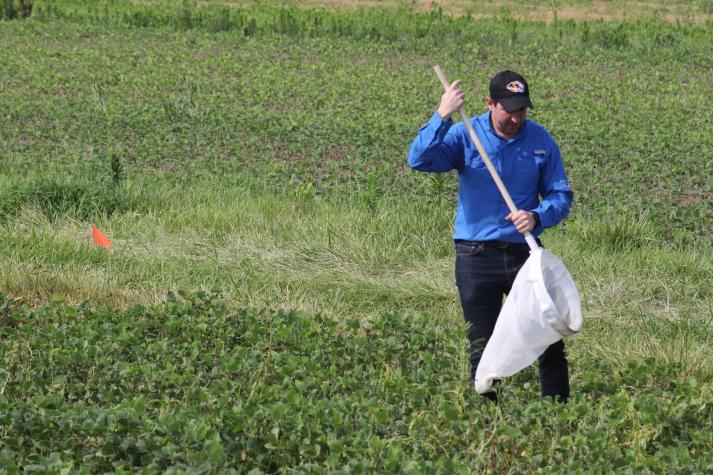COLUMBIA, Mo. – Though physically demanding and time-consuming, scouting fields for insect pests is essential to crop health, yields and profits, says University of Missouri Extension state entomologist Ivair Valmorbida.
Weekly scouting during the growing season helps producers identify and manage problems for early intervention, Valmorbida says. He advises more frequent monitoring when weather favors rapid development of specific insect pests.
Correctly identifying insect pests is crucial, Valmorbida says. Incorrect identifications may lead using the wrong pest management tools, resulting in control failures, destruction of beneficial insects and unnecessary costs.
MU Extension’s Plant Diagnostic Clinic welcomes submission of plant samples for diagnosis. For more information, go to Plant Diagnostic Clinic, call 573-882-3019 or visit the clinic on the MU campus at 28 Mumford Hall, 1100 University Ave., Columbia. There is a 30-minute parking spot located behind Mumford Hall. The clinic is in the basement. You can also contact your local extension agronomist.
With timely scouting, growers can make science-based decisions about thresholds for treatment, avoiding unnecessary use of insecticides, Valmorbida says. Regular scouting helps the producer evaluate insect populations and their injuries to crops over time. Therefore, keeping a record of scouting can provide a helpful historical look, he says.
Valmorbida discourages “windshield” or edge-of-the-field scouting, which does not provide an accurate assessment of the crop because insect pests are not always visible from a distance. It is important to evaluate inner areas of the field and look throughout the plant canopy.
He offers the following guidelines:
• Break large fields into units of 40 to 50 acres, considering similar field characteristics (e.g., soil type, past pest incidence, previous crop).
•Walk in a pattern to assess the whole field broadly (e.g., U, X or W pattern). Avoid choosing good or bad spots.
• Start sampling at a different location in the field every time you scout.
• Avoid sampling only at field edges, as many insects migrate from surrounding areas into the fields. If you find a problem, try to determine whether it is isolated or widespread.
• When estimating the percentage of defoliation, consider the entire canopy.
More information:
• “Introduction to Crop Scouting”
• “Keys to Integrated Pest Management in Soybeans”
Photo
Ivair Valmorbida scouting for pests
MU Extension state entomologist Ivair Valmorbida demonstrated how to scout for pests during a recent field day. Walk in a U, X or W pattern to assess the entire field and sweep vigorously with a sweep net to capture insects from various parts of a field. Identify the insects and determine thresholds. Photo by Linda Geist.
